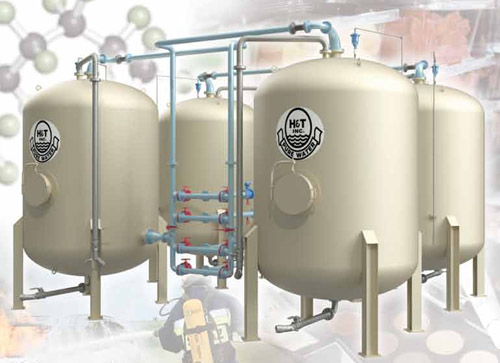Best Practices for PFAS Waste Management at Industrial Sites
Best Practices for PFAS Waste Management at Industrial Sites
Blog Article
Cutting-edge PFAS Therapy Solutions for Safer Water
The raising occurrence of PFAS contamination in water supplies requires an important evaluation of cutting-edge treatment remedies. Advanced purification innovations and unique chemical treatments existing appealing methods for decreasing these relentless contaminants. In addition, emerging bioremediation strategies use a more sustainable strategy to dealing with PFAS obstacles. As regulatory structures remain to adjust, comprehending the effectiveness and scalability of these options becomes vital. What effects do these improvements hold for public wellness and environmental repair, and just how can stakeholders efficiently apply them in varied contexts?
Review of PFAS Contamination
PFAS contamination has emerged as a substantial ecological and public wellness problem. Per- and polyfluoroalkyl substances (PFAS) are a group of artificial chemicals known for their persistence in the environment and human body, leading them to be typically referred to as "forever chemicals." These compounds have been widely used in numerous sectors, consisting of firefighting foams, water-repellent textiles, and food product packaging, largely as a result of their water- and grease-resistant buildings.
The prevalent usage of PFAS has actually led to their detection in dirt, water products, and also in the blood of people and animals. Studies have actually connected PFAS direct exposure to various health issues, consisting of developmental effects in infants, body immune system disorder, and different forms of cancer. Additionally, the ecological determination of these compounds complicates their degradation and elimination, increasing issues about lasting environmental impacts.
Governing bodies are progressively carrying out strict guidelines to check and minimize PFAS levels in alcohol consumption water and other ecological tools. As recognition of PFAS contamination grows, it has come to be vital for communities and industries to look for effective therapy services to minimize exposure and safeguard public wellness.
Advanced Filtration Technologies
As the necessity to attend to PFAS contamination heightens, progressed filtering technologies have arised as an essential component in the remediation efforts aimed at getting rid of these consistent chemicals from water resources. These technologies leverage innovative mechanisms to successfully target and capture PFAS compounds, which are infamously immune to conventional therapy approaches.
One of the most encouraging approaches is using granular turned on carbon (GAC), which adsorbs PFAS molecules due to its high surface and permeable structure. This method has actually been commonly applied in both municipal and commercial setups, showing significant reductions in PFAS focus. In addition, ion exchange materials have actually obtained traction, specifically designed to precisely bind PFAS ions from water, thus promoting their removal.
Membrane layer purification modern technologies, such as reverse osmosis and nanofiltration, additionally reveal efficiency in PFAS elimination by physically dividing contaminants from water - pfas management. These systems can attain high levels of pureness, making them suitable for drinking water applications
Chemical Therapy Developments
Various chemical therapy innovations are being explored to efficiently deal with PFAS contamination in water materials. One appealing technique includes making use of sophisticated oxidation processes (AOPs), which utilize powerful oxidants such as ozone, hydrogen peroxide, or chlorine dioxide combined with UV light to damage down PFAS substances right into less dangerous compounds. This technique has demonstrated efficiency in lab setups, revealing prospective for scalability in real-world applications.
One more innovative strategy is the growth of ion-exchange materials particularly developed to target PFAS. These materials can precisely adsorb PFAS compounds from water, enabling their elimination during treatment procedures. Current improvements have improved the performance and capability of these resins, making them a beneficial alternative for water therapy facilities.
In web link addition, scientists are examining using chemical agents like persulfate and ferrous ions to boost the deterioration of PFAS in contaminated water. These agents can generate chemical responses that help with the break down of relentless PFAS substances.
Emerging Bioremediation Strategies
Current developments in chemical therapy developments have actually led the way for checking out bioremediation techniques as a feasible alternative for attending to PFAS contamination. Bioremediation utilizes the all-natural metabolic processes of bacteria to degrade or change pollutants, making it an attractive strategy for dealing with relentless contaminants like PFAS.
Arising techniques in bioremediation include making use of genetically engineered bacteria that can especially target and break down PFAS compounds. These microbial pressures are being created for their improved destruction capacities, raising the efficiency of the remediation procedure. Additionally, researchers are checking out the potential of plant-assisted bioremediation, where certain plant types might uptake and withdraw PFAS from contaminated soil and water.
One more encouraging approach is the application of bioaugmentation, which involves introducing helpful microorganisms into infected environments to increase the deterioration of PFAS. This approach can facilitate faster remediation timelines and enhance general efficiency.

Regulatory Structures and Specifications
An extensive regulatory framework is necessary for efficiently taking care of PFAS contamination and making sure public wellness defense. The raising acknowledgment of per- and polyfluoroalkyl substances (PFAS) as environmental pollutants has actually triggered different federal and state agencies to create standards that regulate their existence in water supplies. The U.S. Epa (EPA) has actually developed wellness advisories and is pursuing setting enforceable restrictions for PFAS in alcohol consumption water.
State-level guidelines differ considerably, with some states embracing more stringent standards than those recommended by the EPA. These laws usually include optimum contaminant degrees (MCLs) for specific PFAS compounds, surveillance needs, and reporting responsibilities for my response water utilities. Additionally, emerging structures concentrate on the removal of polluted websites, stressing the requirement for reliable treatment technologies.

Verdict
In verdict, the growth and application of innovative PFAS treatment services are vital for resolving the pervasive issue of water contamination. Advanced purification innovations, chemical therapies, and emerging bioremediation techniques collectively provide a diverse strategy to properly reduce and degrade PFAS levels. As governing frameworks remain to progress, incorporating these modern technologies will certainly be necessary to secure public health and wellness and restore the stability of contaminated water sources, ultimately adding to a cleaner and more secure environment.
Report this page